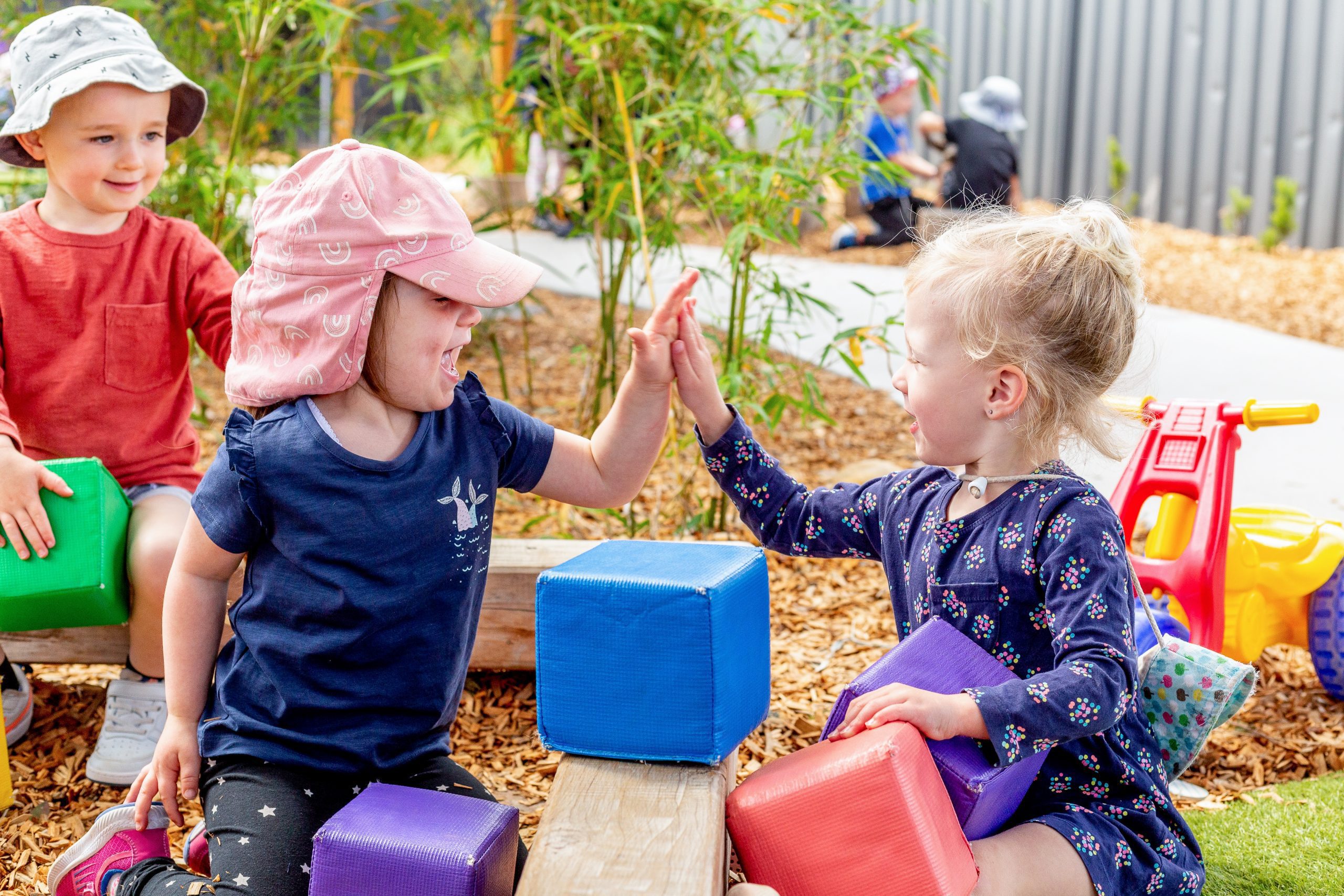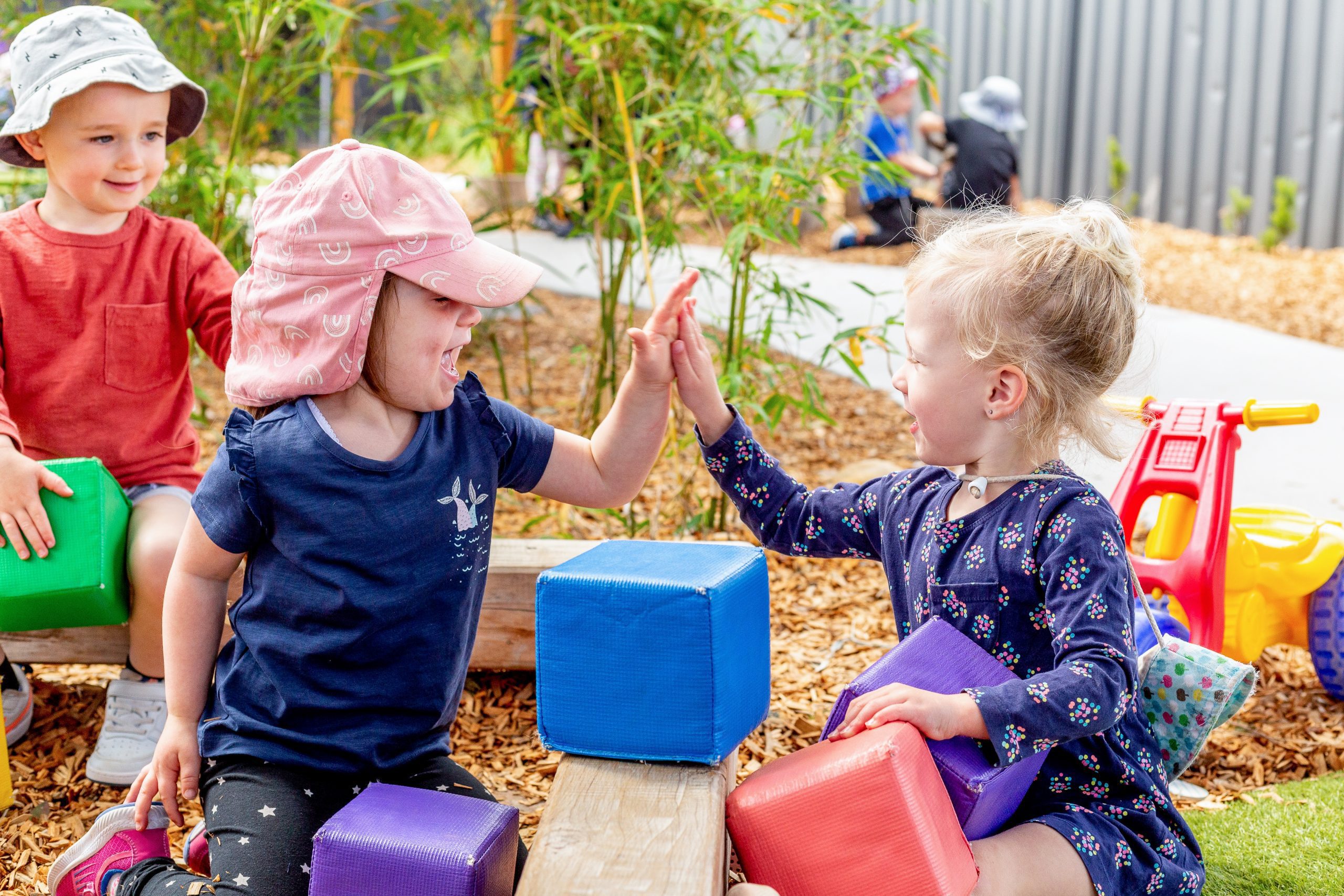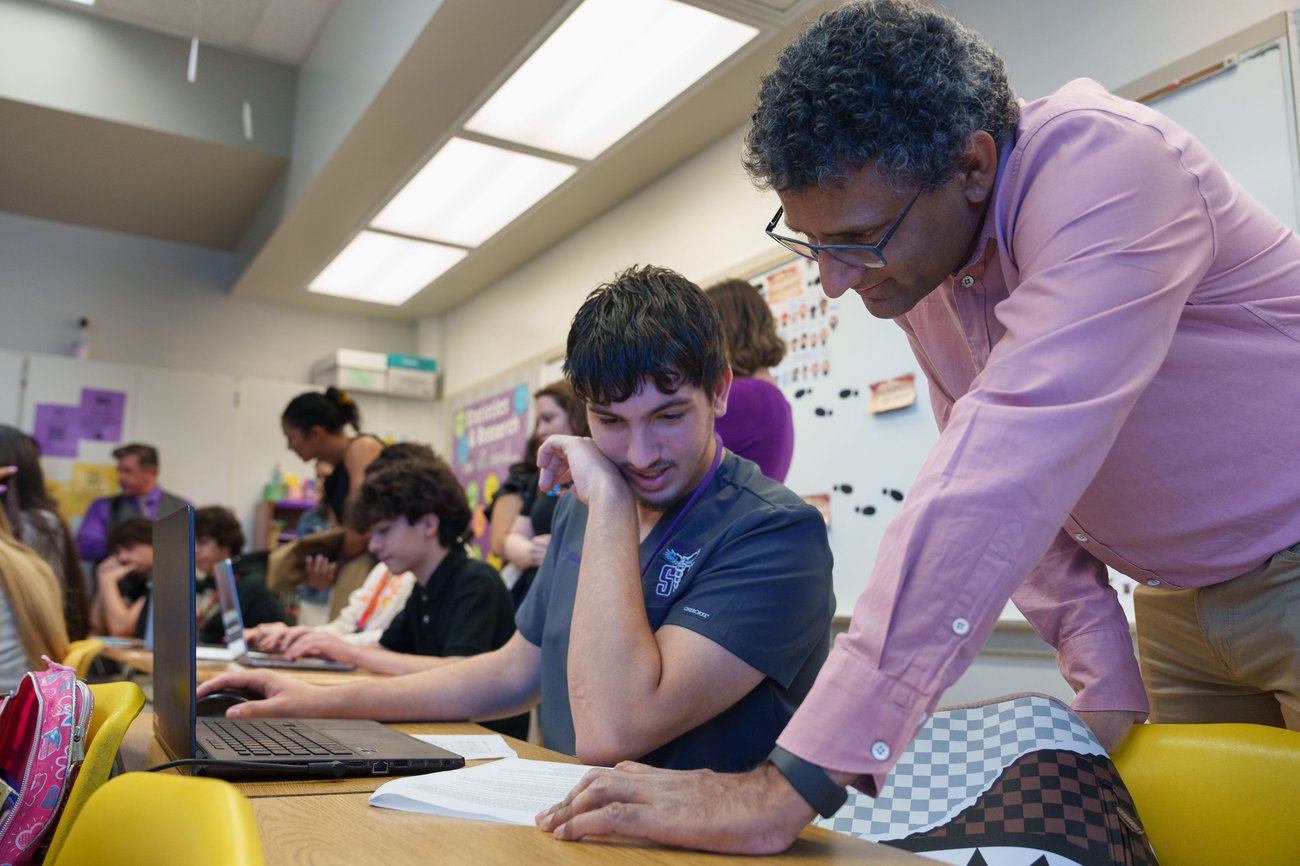
Learning Through Play: Key Benefits and Real-Life Examples
- November 21, 2025
- 0
Contents
- 1
- 2 Introduction
- 3 1. What Is Learning Through Play?
- 4 2. Why Play Is Crucial for Child Development
- 5 3. Cognitive Benefits of Play
- 6 4. Social Benefits of Learning Through Play
- 7 5. Emotional Benefits of Play
- 8 6. Physical Benefits of Learning Through Play
- 9 7. Types of Play That Promote Learning
- 10 8.1 Building Blocks
- 11 8.2 Pretend “Supermarket”
- 12 8.3 Outdoor Playground
- 13 8.4 Art and Craft Activities
- 14 8.5 Board Games
- 15 8.6 Storytelling and Puppet Play
- 16 8.7 Science Experiments
- 17 9. How Parents and Teachers Can Support Learning Through Play
- 18 10. Play-Based Learning in Schools
- 19 11. Long-Term Impact of Learning Through Play
- 20 Conclusion
Introduction
Play is often seen as something fun, entertaining, or even a “break” from learning — but research shows the opposite. Play is learning. For children, it is the most natural and powerful way to understand the world, explore ideas, develop essential skills, and express creativity. Whether a child is building blocks, pretending to be a doctor, solving a puzzle, or running outdoors, play stimulates cognitive, emotional, physical, and social growth.
The phrase “learning through play” describes a child-centered approach that transforms simple activities into meaningful learning experiences. Modern education systems, psychologists, and early childhood experts agree that play shapes how children think, feel, behave, and interact. In fact, global organizations such as UNICEF and the LEGO Foundation emphasize play-based learning as a fundamental tool for developing adaptable, confident, and curious future citizens.
This article dives deep into the benefits of learning through play, supported by real-life examples, practical applications, and expert insights. Whether you are a parent, teacher, caregiver, or student of child development, this guide will show exactly how play supports lifelong learning.
1. What Is Learning Through Play?
Learning through play refers to educational experiences where children learn naturally, through enjoyable and self-directed activities rather than formal instruction. It emphasizes:
-
Curiosity
-
Creativity
-
Exploration
-
Imagination
-
Trial and error
-
Hands-on engagement
When children play, they are not just passing time—they are experimenting, solving problems, building knowledge, strengthening their bodies, understanding emotions, and practicing social interactions.
Five Core Characteristics of Play-Based Learning
Experts define meaningful play through five key elements:
-
Play is joyful – Children enjoy it and willingly participate.
-
Play is actively engaging – Involves mind, body, and imagination.
-
Play is meaningful – Children relate it to real experiences.
-
Play is iterative – Children try, repeat, and improve.
-
Play is socially interactive – Many types of play involve collaboration, negotiation, and communication.
These characteristics ensure that play becomes a powerful engine for cognitive and emotional development.
2. Why Play Is Crucial for Child Development
Human development theories—from Piaget, Vygotsky, Froebel, and Montessori to modern neuroscience—consistently show that play fuels learning. Let’s explore the major areas of development enhanced by play.
3. Cognitive Benefits of Play
3.1 Enhances Problem-Solving Skills
When children build structures, complete puzzles, or experiment with materials, they practice:
-
Testing ideas
-
Predicting outcomes
-
Making decisions
-
Reasoning logically
-
Learning from mistakes
Example: A child stacking blocks learns about balance, weight, and gravity. When the tower collapses, they adjust their method and improve.
3.2 Encourages Creativity and Imagination
Pretend play (role-play) stimulates:
-
Abstract thinking
-
Innovation
-
Narrative skills
-
Expression of thoughts and ideas
Example: A child pretending to run a “restaurant” creates menus, sets prices, and organizes customers — activities that involve planning, storytelling, math, and logic.
3.3 Strengthens Memory and Concentration
Games that involve rules, strategy, and repetition enhance:
-
Working memory
-
Attention span
-
Cognitive flexibility
Example: Memory card games help children improve retention while enjoying the challenge.
3.4 Boosts Language and Communication
Through play, children hear new words, express needs, negotiate roles, and narrate stories.
Example: When playing with dolls, children use sentences like “The baby is sleepy” or “We need to visit the doctor,” naturally expanding vocabulary.
4. Social Benefits of Learning Through Play
4.1 Develops Teamwork and Cooperation
Group play teaches children to:
-
Share
-
Take turns
-
Coordinate roles
-
Work together toward common goals
Example: Building a sandcastle together helps children divide tasks and solve conflicts.
4.2 Improves Communication and Interpersonal Skills
Play encourages dialogue, negotiation, and expression of opinions.
Example: Children playing “house” negotiate who will be the parent, who cooks, and what story to follow.
4.3 Teaches Conflict Resolution
Disagreements during play help children learn:
-
Compromise
-
Emotional control
-
Perspective-taking
-
Problem-solving
Example: If two children want the same toy, they learn to negotiate, share, or rotate use.
4.4 Encourages Empathy
Pretend play allows children to step into someone’s shoes.
Example: Being a “doctor” in pretend play teaches empathy for sick individuals and develops nurturing behavior.
5. Emotional Benefits of Play
5.1 Builds Confidence and Independence
Play helps children take risks in a safe environment.
Example: Climbing playground equipment teaches courage and decision-making.
5.2 Enhances Emotional Regulation
During play, children experience:
-
Excitement
-
Frustration
-
Joy
-
Anxiety
-
Triumph
They learn to manage emotions, cope with disappointment, and find solutions.
5.3 Reduces Stress
Play is therapeutic. It allows emotional release and boosts mental well-being.
5.4 Improves Self-Expression
Play gives children a safe space to express emotions they cannot verbalize.
Example: Art play allows children to express feelings through colors and shapes.
6. Physical Benefits of Learning Through Play
6.1 Develops Motor Skills
Outdoor play promotes:
-
Running
-
Jumping
-
Climbing
-
Balancing
-
Throwing and catching
Fine motor play promotes:
-
Gripping
-
Drawing
-
Manipulating small objects
-
Cutting with scissors
6.2 Improves Hand–Eye Coordination
Sports, puzzles, and building toys help synchronize vision and movement.
6.3 Promotes Healthy Growth
Physical play strengthens muscles, bones, and cardiovascular health.
6.4 Encourages Active Lifestyle Habits
Children who play physically tend to adopt healthier lifestyles long-term.
7. Types of Play That Promote Learning
Understanding the different types of play helps parents and educators support well-rounded development.
7.1 Physical Play
Includes running, jumping, climbing, playing sports.
Real-life examples:
-
Playground games
-
Cycling
-
Ball games
-
Hopscotch
Benefits: Motor development, health, confidence.
7.2 Pretend Play / Dramatic Play
Children imitate real-life roles and situations.
Real-life examples:
-
Playing “doctor,” “teacher,” “shopkeeper”
-
Dolls, kitchen sets, costumes
Benefits: Social skills, language development, creativity.
7.3 Constructive Play
Building and creating things.
Real-life examples:
-
Blocks
-
LEGOs
-
Playdough
-
Sandcastles
Benefits: Problem-solving, spatial awareness, imagination.
7.4 Exploratory Play / Sensory Play
Children explore textures, materials, and environments.
Real-life examples:
-
Water play
-
Finger painting
-
Sand play
-
Sensory bins
Benefits: Sensory development, scientific thinking, curiosity.
7.5 Games With Rules
Board games, card games, and team sports.
Real-life examples:
-
Ludo
-
UNO
-
Chess
-
Football
Benefits: Strategy, patience, self-control, cooperation.
8. Real-Life Examples of Learning Through Play
Below are detailed examples showing how everyday play builds essential skills.
8.1 Building Blocks
Learning:
-
Physics concepts
-
Creativity
-
Math (shapes, sizes)
-
Fine motor skills
-
Collaborative problem-solving
Scenario: A child tries to build a tall tower. It keeps falling. Through trial and error, they learn about balance and stability — without being “taught.”
8.2 Pretend “Supermarket”
Learning:
-
Math (counting items, money)
-
Literacy (labels, signs)
-
Social skills (customer interaction)
-
Negotiation skills
Scenario: Children take turns being the shopkeeper and shopper, developing communication and basic numeracy.
8.3 Outdoor Playground
Learning:
-
Physical strength
-
Balance
-
Risk assessment
-
Teamwork
-
Emotional resilience
Scenario: A child climbing a ladder feels scared but motivated. Reaching the top builds confidence and independence.
8.4 Art and Craft Activities
Learning:
-
Fine motor skills
-
Emotional expression
-
Creativity
-
Focus
Scenario: Painting helps children express emotions they cannot verbalize while strengthening hand muscles.
8.5 Board Games
Learning:
-
Turn-taking
-
Strategy
-
Memory
-
Fairness
Scenario: UNO helps children understand rules, probability, and self-control.
8.6 Storytelling and Puppet Play
Learning:
-
Vocabulary building
-
Emotional intelligence
-
Imagination
-
Narrative skills
Scenario: Using puppets to act out feelings teaches empathy and communication.
8.7 Science Experiments
Learning:
-
Observation
-
Hypothesis creation
-
Cause and effect
-
Critical thinking
Scenario: Mixing baking soda and vinegar helps children understand chemical reactions through fun play.
9. How Parents and Teachers Can Support Learning Through Play
9.1 Create a Play-Friendly Environment
-
Provide open space
-
Offer age-appropriate toys
-
Allow safe risk-taking
-
Encourage messy, exploratory play
9.2 Follow the Child’s Lead
Instead of directing play, let the child guide it. Adults should observe, support, and participate when invited.
9.3 Ask Open-Ended Questions
Questions stimulate critical thinking:
-
“What do you think will happen?”
-
“How can we make it stronger?”
-
“Why do you think it fell?”
9.4 Provide Diverse Materials
Use everyday items and natural materials:
-
Cardboard boxes
-
Water bottles
-
Leaves and stones
-
Paints, clay, beads
9.5 Limit Screen Time
Digital play can be educational, but it should be balanced with hands-on experiences.
9.6 Encourage Social Play
Arrange playdates, group games, and collaborative activities.
10. Play-Based Learning in Schools
Modern education increasingly integrates play into teaching strategies, especially in early grades.
10.1 Activity-Based Learning
Schools use:
-
Role-play
-
Learning stations
-
Problem-solving games
-
Hands-on experiments
10.2 Montessori and Reggio Emilia Approaches
These emphasize:
-
Self-led learning
-
Sensory materials
-
Exploration
-
Real-world experiences
10.3 STEM and STEAM Through Play
Robotics kits, coding games, and building projects introduce complex concepts in playful ways.
11. Long-Term Impact of Learning Through Play
Children who experience play-based learning tend to become:
-
Better problem-solvers
-
More creative thinkers
-
Emotionally resilient
-
Strong communicators
-
Confident decision-makers
Play supports 21st-century skills essential for success in school, work, and life.
Conclusion
Learning through play is far more than entertainment — it is the foundation of child development. Through play, children discover themselves, understand the world, develop crucial skills, and build the confidence needed to thrive. Whether at home, school, or outdoors, every playful moment is a learning opportunity waiting to unfold.
Supporting play-based learning means nurturing curiosity, sparking imagination, and giving children the freedom to explore. And when we allow children to learn through play, we help them become not just better students, but better thinkers, creators, and human beings.




















